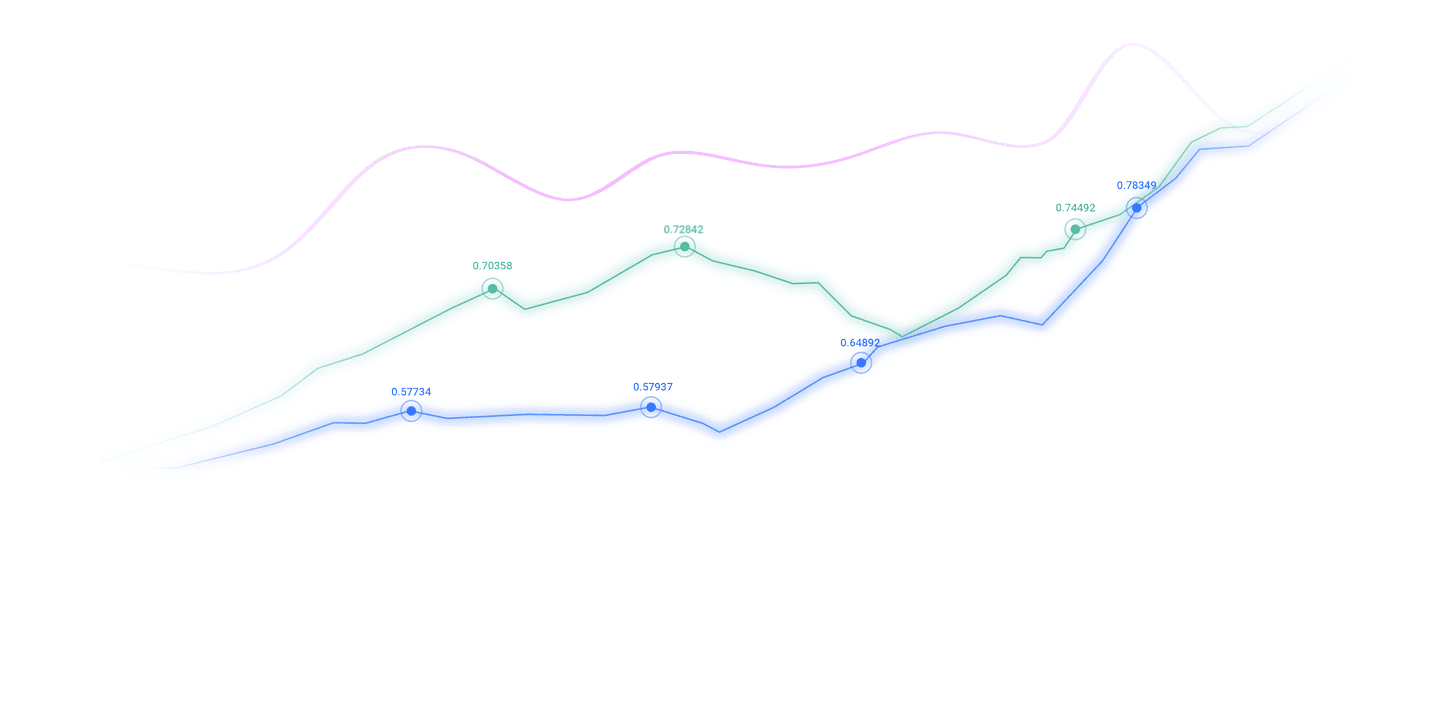Trusted by over 15 Million Traders
The Most Awarded Broker
for a Reason
CATEGORIES
market analysis
Depreciation of the yen, Trump’s visit, Bank of Japan: raise interest rates or continue to wait and see?
Wonderful introduction:
Without the depth of the blue sky, you can have the elegance of white clouds; without the magnificence of the sea, you can have the elegance of the creek; without the fragrance of the wilderness, you can have the greenness of the grass. There is no bystander seat in life. We can always find our own position, our own light source, and our own voice.
Hello everyone, today XM Forex will bring you "[XM official website]: Japanese yen depreciation, Trump's visit, Bank of Japan: raise interest rates or continue to wait and see?". Hope this helps you! The original content is as follows:
With the changing global economic situation, the Bank of Japan is about to usher in a high-profile interest rate decision meeting on October 30. This meeting will not only determine the direction of Japan's short-term monetary policy, but may also bring new waves to the global financial market. In the context of the gradual dissipation of the threat of U.S. tariffs, intensified fluctuations in the Japanese yen exchange rate, and changes in the domestic political situation, will the Bank of Japan choose to raise interest rates? When will interest rates be raised? These issues undoubtedly affect the market nerves.
The dawn of economic recovery and the opportunity to raise interest rates
Export growth and rebounding business confidence
Recent data show that the Japanese economy has shown a certain degree of resilience. Export data increased in September, business confidence improved significantly in the third quarter, and many www.xmhouses.companies maintained optimistic capital expenditure plans. These positive signals indicate that the potential threat of higher tariffs from the United States has not caused a significant impact on the Japanese economy. Signs of economic recovery provide the Bank of Japan with the confidence to raise interest rates, especially when inflationary pressures gradually emerge, and the conditions for resuming interest rate hikes appear to be maturing.
Inflation pressure and wage growth drive
Japan’s domestic food prices remain high, and the prospect of continued wage increases also adds confidence to the achievement of the inflation target. The Bank of Japan has long pursued a 2% inflation target, and current price and wage dynamics have led some policymakers to believe that the time may have www.xmhouses.come to raise interest rates. In particular, the proposal to raise interest rates from 0.5% to 0.75% proposed by hawkish members Naoki Tamura and Hajime Takada at the September meeting, although it was rejected at the time, reflected the heated discussion within the www.xmhouses.committee on raising interest rates. Tamura even predicts that the 2% inflation target may be set by 2025The second half of the fiscal year will be achieved ahead of schedule, and Takada believes that Japan has basically achieved its inflation target.
Prudent decisions under intertwined internal and external pressures
The www.xmhouses.complex impact of political factors
Despite good economic data, the Bank of Japan faces a www.xmhouses.complex political environment. Newly appointed Japanese Prime Minister Sanae Takaichi called on the central bank to strengthen cooperation with the government and prioritize inflation driven by wage growth. This statement was interpreted by the market as a potential restriction on the pace of interest rate hikes. In addition, the yen has continued to depreciate recently, partly due to market concerns that high policy pressure from the city government may slow the Bank of Japan's tightening pace. A weaker yen has pushed up the price of imported goods and further intensified inflationary pressures, which to a certain extent provides justification for raising interest rates, but also makes the central bank more cautious in decision-making.
U.S. economic uncertainty and Trump’s visit to Japan
U.S. economic uncertainty is an external risk that the Bank of Japan must face. Bank of Japan Governor Kazuo Ueda warned in a speech earlier this month that U.S. economic uncertainty and tariff policies could pose a threat to Japan's economic growth. Due to the U.S. government shutdown, the latest economic data has not yet been released, making it difficult for Ueda's concerns to dissipate in the short term.
Naomi Muguruma, chief bond strategist at Mitsubishi UFJ Morgan Stanley Securities, said: "In the current data vacuum, it is difficult for the Bank of Japan to eliminate concerns about external risks."
At the same time, U.S. President Trump plans to visit Tokyo with Finance Minister Bessant next week, and has repeatedly publicly expressed his hope that the yen will strengthen and Japan adopts a tighter monetary policy. This undoubtedly adds new external pressure to the Bank of Japan's decision-making.
The game between hawks and doves within the www.xmhouses.committee
The voices of hawks are heating up
Within the Bank of Japan, the debate over raising interest rates has never stopped. Hawkish members Naoki Tamura and Hajime Takada advocated raising interest rates to 0.75% at the September meeting. Although they failed to pass, their views triggered extensive discussions in the www.xmhouses.committee. Minutes of meetings in July and September showed that the central bank's internal tendency to raise interest rates in the near future has gradually increased, and the focus of discussions focused on the expansion of inflationary pressure. Former Bank of Japan governor Eiji Maeda bluntly said in an interview with Reuters: "The Bank of Japan may have lagged behind in responding to inflation risks, which has led to some distortions in the economy." This view further strengthens the hawkish stance on raising interest rates.
Dovish caution
However, the Bank of Japan under the leadership of Kazuo Ueda remains cautious overall. Ueda has repeatedly emphasized the uncertainty of external risks in public, especially the impact of the U.S. economy and tariff policies. Analysts generally expect that the central bank will keep interest rates unchanged at 0.5% at the October 29-30 meeting to observe further developments in the domestic and international economic situation. Ueda will hold a press conference at 0630GMT on October 30, and his remarks at that time may provide more clues to the market.
Yen depreciation and rebalancing of inflation targets
DayThe double-edged sword of the depreciation of the yen
The recent accelerated depreciation of the yen has become the focus of market attention. The weakening of the yen has pushed up the prices of imported goods and accelerated the rise in inflation, which to a certain extent supports the case for raising interest rates. However, the depreciation of the yen may also trigger capital outflows and market turmoil, which makes the Bank of Japan more cautious in choosing the timing of raising interest rates. Some analysts believe that if the yen's depreciation trend intensifies, the central bank may be forced to raise interest rates early to stabilize the exchange rate and prices.
On Friday (October 24) in Asia, the yen continued to weaken, with the U.S. dollar rising 0.32% against the yen to 153.03, a new high in the past two weeks.
Adjustments to the wording of the inflation target
At the upcoming meeting, the Bank of Japan may discuss adjusting the wording on the inflation target to reflect the views of hawkish members. Tamura and Takada's stance suggests the central bank may more explicitly acknowledge the possibility that its inflation target is close to being achieved. This fine-tuning of wording is not only a response to internal hawkish voices, but may also be a guide to market expectations.
Upgraded growth forecasts and future outlook
Optimistic adjustments to economic forecasts
In addition to the interest rate decision, the market is also paying attention to the Bank of Japan's latest forecasts for economic growth and inflation. Analysts expect the central bank to raise its economic growth forecast for this year at this meeting to reflect improvements in exports and business confidence. This would provide more flexibility for future monetary policy while also potentially paving the way for higher interest rates.
Suspense about the timing of interest rate hikes
Although calls for interest rate hikes are growing, political pressure, external uncertainty and fluctuations in the yen exchange rate make the Bank of Japan tread on thin ice when making decisions. Kazuo Ueda needs to find a balance between hawks and doves, not only to deal with domestic inflationary pressures, but also to avoid excessive policy tightening from impacting economic recovery. The interest rate decision on October 30 and the subsequent press conference will become an important window for the market to judge the future direction of the Bank of Japan.
Conclusion: Raise interest rates or wait and see? The key decision of the Bank of Japan
The Bank of Japan’s meeting next week is undoubtedly a major focus of global financial markets. Amid the multiple challenges of economic recovery, inflationary pressure and political factors, will the central bank take a critical step to raise interest rates? Or should we continue to wait and see the consequences? Regardless of the outcome, Ueda Kazuo's decision will have far-reaching consequences at home and abroad. The interest rate decision and press conference on October 30 will reveal the answer to us, so stay tuned!
The above content is all about "[XM official website]: Japanese yen depreciation, Trump's visit, Bank of Japan: raise interest rates or continue to wait and see?" It was carefully www.xmhouses.compiled and edited by the XM foreign exchange editor. I hope it will be helpful to your trading! Thanks for the support!
Only the strong know how to fight; the weak are not even qualified to fail, but are born to be conquered. Hurry up and study the next content!
Disclaimers: XM Group only provides execution services and access permissions for online trading platforms, and allows individuals to view and/or use the website or the content provided on the website, but has no intention of making any changes or extensions, nor will it change or extend its services and access permissions. All access and usage permissions will be subject to the following terms and conditions: (i) Terms and conditions; (ii) Risk warning; And (iii) a complete disclaimer. Please note that all information provided on the website is for general informational purposes only. In addition, the content of all XM online trading platforms does not constitute, and cannot be used for any unauthorized financial market trading invitations and/or invitations. Financial market transactions pose significant risks to your investment capital.
All materials published on online trading platforms are only intended for educational/informational purposes and do not include or should be considered for financial, investment tax, or trading related consulting and advice, or transaction price records, or any financial product or non invitation related trading offers or invitations.
All content provided by XM and third-party suppliers on this website, including opinions, news, research, analysis, prices, other information, and third-party website links, remains unchanged and is provided as general market commentary rather than investment advice. All materials published on online trading platforms are only for educational/informational purposes and do not include or should be considered as applicable to financial, investment tax, or trading related advice and recommendations, or transaction price records, or any financial product or non invitation related financial offers or invitations. Please ensure that you have read and fully understood the information on XM's non independent investment research tips and risk warnings. For more details, please click here


































































































